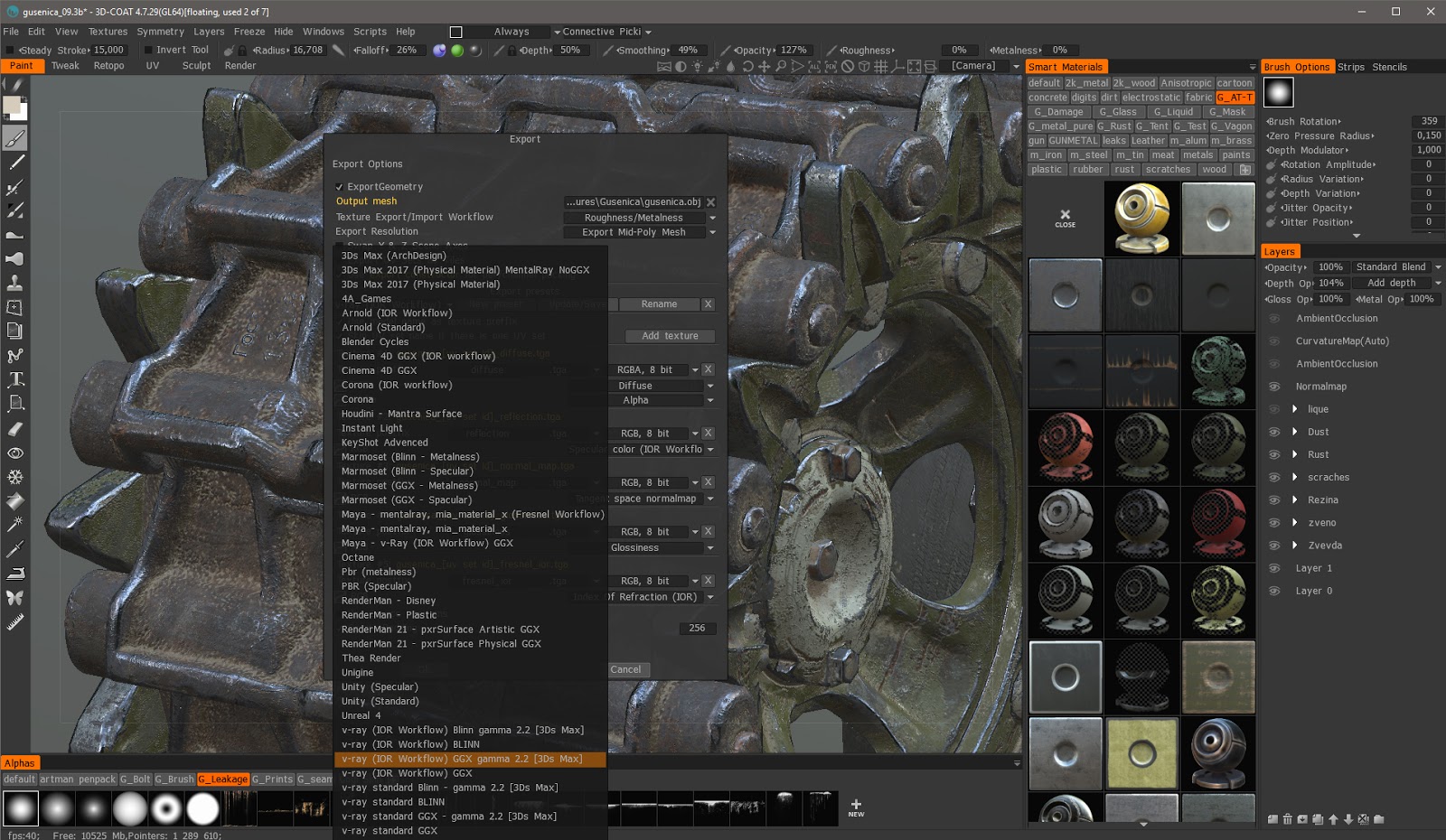
The equivalent in 3D Coat I expect to have some fundamental workflows for poly editing, such as subdivide and extrude. Rather than selecting vertices and using the transform tool, using the move brush is easier. Getting out of Mesh Edit mode and going to Sculpt Mode, is like 10x times easier and faster to work on. Septem/ 2 Comments / by crwjaakko Tags: 3D modeling software, 3D software, 3D-Coat (Software), 3D-Coat 4.I have not tried 3D coat, I used Mudbox many many years ago and looks like it got almost no development since then, to become a robust and competitive piece of software.Īs of now, I do only sculpting in Blender so I can mention these information for sure.įor moving vertices around is very useful. I hope you enjoyed this tutorial on PBR texturing in 3D Coat. Here is the video tutorial. I will just keep it as default and click checkboxes to export Color, Roughness, Normal, Metalness and AO. Now the textures are ready to go. This will export a lot of maps, including Displacement and Ambient Occlusion. We can choose several presets to export to, for example Unreal 4.

The Spec-Gloss workflow is also supported. If you are exporting your textures to Unreal Engine 4 for example choose this. In Texture Export/Import Workflow I choose Roughness/Metalness. I will Export geometry, select Output mesh. And now when we erase the stencil is applied and we only erase certain areas.Įxporting options for Geometry and Texturesįinally, to export our textures, we can go to File and select Export Objects & Textures. We can then scale this by using the magnifying glass in the preview options. In the middle panel, clicl Stencils and select OT_random6.
#3d coat workflow tutorial cracked#
Let’s use a stencil for cracked paint effect. It’s nice to accentuate some of the worn edge effects, and also I like to use square alpha for this, changing the brush size constantly. You can scroll with the mouse wheel to change size of the brush. It’s nicer to use those without much falloff to this task since we want the transition between painted area and bare metal to be sharp. I will select hard looking alpha from the Alphas panel, and start to chip away the paint. I like to chip some parts of the paint so that it looks less uniform and more organic. Now we can further tweak the paint layer. And again I will right click our PaintLayer and select Fill Whole Model. I’m going to give this Smart Material a new name, and hit Save as New. I like extreme effect so I am going to choose something around 5 or 6. This will allow to change strength of the Curvature Map, which means that you can choose how strongly you want the worn-edges effect to appear. We have plenty of options here, but I’d like to focus in Overall Cavity Modulator. Smart material editor in 3D Coat is easy to use. So I will right click the smart material I chose, and select Smart Material Editor. This effect is based on the Curvature Map that is automatically generated for you.

Now, I’d like to edit the curvature effect more. Now, we can again use magnifying glass button in Preview options to get a nice scale of the effect. Again, use Smart Material Preview to get an idea how it will look like. I’m going to choose this beige one which I created myself. We can go to paints in Smart Materials tab and pick the one we like. Let’s Add a new layer by clicking the button of the lower right of Layers panel. You have just PBR textured a metal asset.
#3d coat workflow tutorial full#
We can preview and check our object in full PBR glory.

Then, let’s double click this layer and rename it to BaseMetal. We can now right click Layer 1 and choose option “Fill whole layer”.


 0 kommentar(er)
0 kommentar(er)
